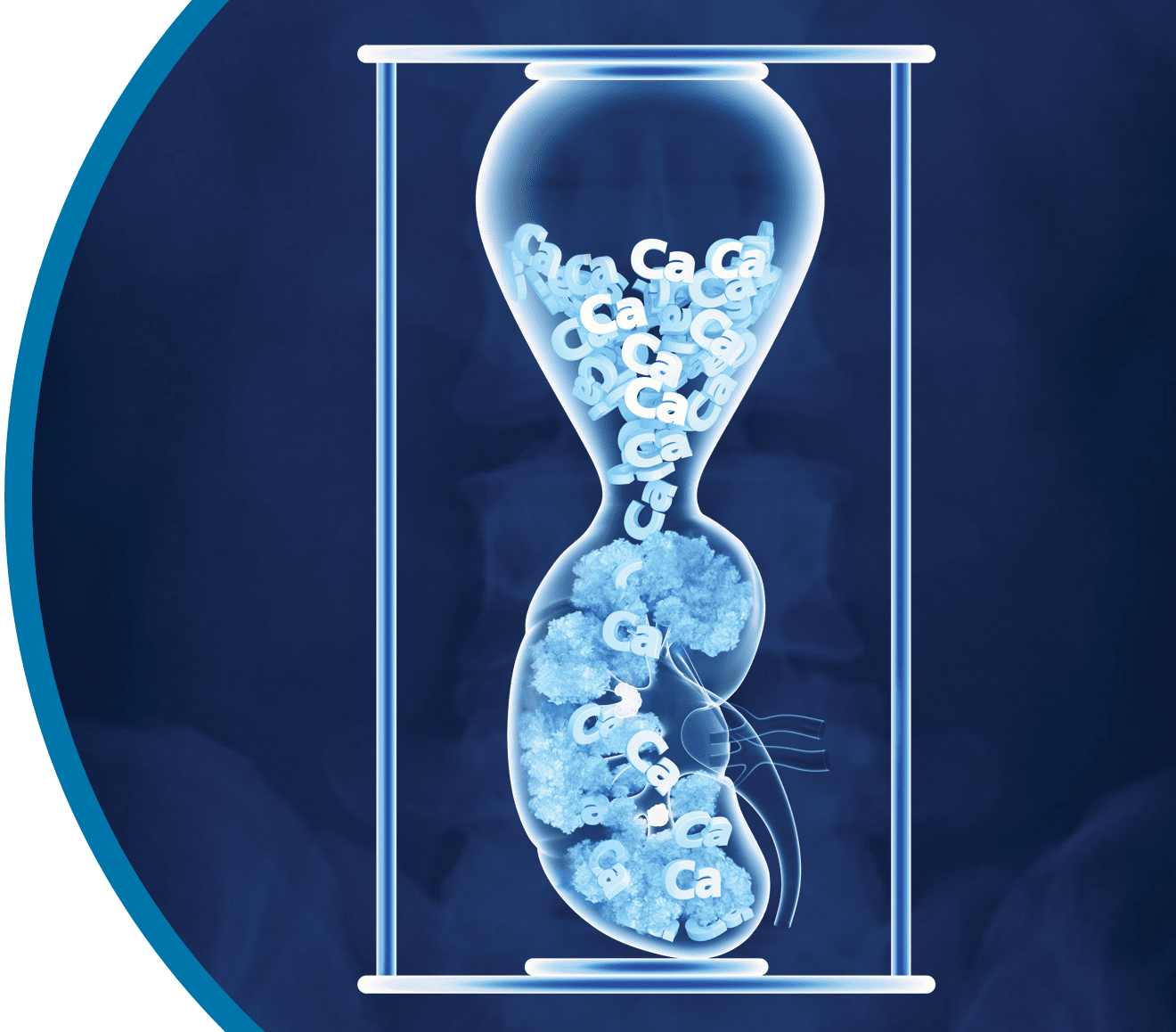BEYOND CALCIUM CONTROL
In chronic hypoparathyroidism, increasing calcium can increase patients' risk
Patients often require very high doses of calcium and active vitamin D to control hypoparathyroidism. This can lead to hypercalciuria, which increases the risk of kidney stones, nephrocalcinosis, and renal insufficiency.1
Evaluating disease control requires routine monitoring not only of serum calcium, but also of serum phosphate, calcium-phosphate product, and urinary calcium. Symptoms, quality of life, and comorbidities must also be observed.1



Use these indicators to help identify patients who are not adequately controlled1:
- Insufficient control of serum calcium concentration (this could be due to intercurrent illness, compliance, absorption, or intrinsic changes in requirements that are beyond facile correction with calcium and active vitamin D).
- Oral calcium/vitamin D medications required to control the serum calcium or symptoms that exceed 2.5 g of calcium, 1.5 μg of active vitamin D, or 3.0 μg of the 1-α vitamin D analog.
- Hypercalciuria, renal stones, nephrocalcinosis, stone risk, or reduced creatinine clearance or eGFR (<60 mL/min).
- Hyperphosphatemia and/or calcium phosphate product that exceeds 55 mg2/dL2 (4.4 mmol2/L2).
- A gastrointestinal tract disorder that is associated with malabsorption.
- Reduced quality of life.
Review HPT literature, downloadable resources, and support for healthcare
professionals and patients.